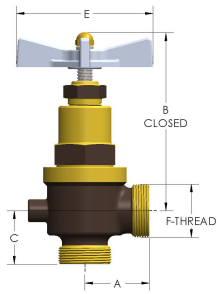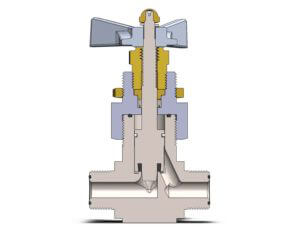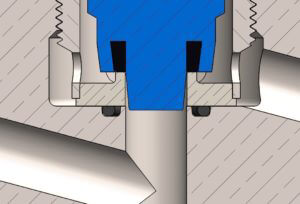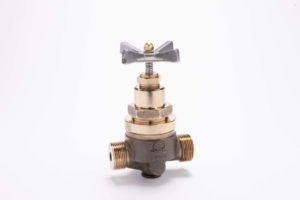How Does a Needle Valve Work?
Like most valves, needle valves are responsible for the safe and efficient operation of industrial machinery. They control the flow rate of fluid within a pipeline, but how does a needle valve work?
To give you a better understanding of these common industrial valves, here’s everything you need to know about your question how does a needle valve work?

Needle Valve Construction and Design
Needle valves are similar to shutoff valves. They’re used to start, stop, and regulate the flow rate within a pipeline.
However, needle valves are designed differently. Unlike shutoff valves, needle valves have a long, tapered, needle-like point at the end of the valve stem. This is often referred to as the plunger.
These valves also have a handwheel or a small handle located on the plunger that controls the position of the plunger.
The valve’s needle-like plunger fits into the seat. Because of this unique design, a needle valve can precisely and accurately control how much fluid passes through the valve.
How Does a Needle Valve Work
Needle valves can operate manually or automatically. Manually operated needle valves use the handwheel to control the distance between the plunger and the valve seat. When the handwheel is turned in one direction, the plunger is lifted to open the valve and allow fluid to pass through. When the handwheel is turned in the other direction, the plunger moves closer to the seat to decrease the flow rate or close the valve.
Automated needle valves are connected to a hydraulic motor or an air actuator that automatically opens and closes the valve. The motor or actuator will adjust the plunger’s position according to timers or external performance data gathered when monitoring the machinery.
Both manually operated and automated needle valves provide precise control of the flow rate. The handwheel is finely threaded, which means it takes multiple turns to adjust the position of the plunger. As a result, a needle valve can help you better regulate the flow rate of fluid in the system.
Needle Valve Uses
Needle valves are commonly used to control flow and protect delicate gauges from damage caused by sudden pressure surges of liquids and gases. They’re ideal for systems using lighter and less viscous materials with low flow rates. Needle valves are usually used in low-pressure hydraulic systems, chemical processing, and other gas and liquid services.

These valves can also be applied to high-temperature and oxygen service based on their materials. Needle valves are usually made of stainless steel, bronze, brass, or metal alloys. It’s important to choose a needle valve made with the material that’s best suited for the service you need. This will help to preserve that valve’s service life and keep your systems running smoothly and safely.
Now that you learned the basics to the common question; how does a needle valve work? Learn more about the function of needle valves and how to choose the appropriate needle valve for a particular application, by contacting CPV Manufacturing.

